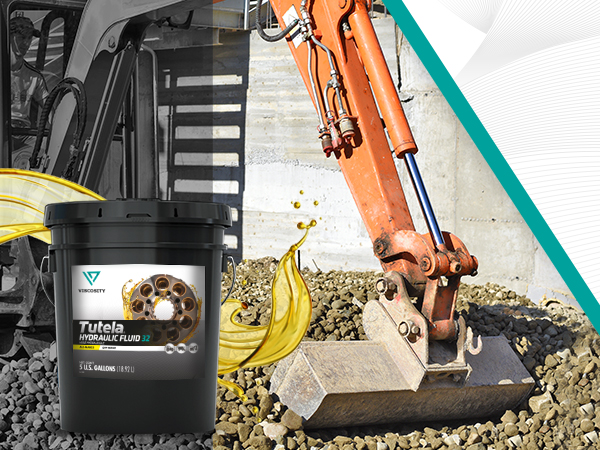Keep an Eye Out: New Trends in the AG Industry 2023 is rolling to an end, but industry advancements and changes remain …


Innovation and technology are often thought of as modern ideas associated with
concepts such as robotics, genetics, and information technology, to name a few.
However, innovative ideas and advancements have been occurring since the beginning
of human civilization. We have assimilated the great inventions of old into our daily lives
and routines without even noticing, and this is also the case with hydraulics.
Derived from the Greek hydraulikos (water organ), hydraulics has played a
significant role in the technological advances that have allowed us to do more with much
less effort. Irrigation, aqueducts, and turbines were all built following the principles of fluid
mechanics. In practice, hydraulic motion aligns with Pascal’s Law, which states that when
applying pressure to an incompressible fluid within a confined space, said pressure would
distribute evenly in all directions. In mechanical equipment, this pressure can be applied
by a piston exerting compression over oil contained within a cylinder; this force will
multiply and affect a receiving object, like a secondary piston, even if it is heavier or larger
in size.
Equipment in the days of the Industrial Revolution was mostly powered by steam,
which had its highest peak around the construction and operation of the railroad. Hybrid
solutions began to emerge soon after, integrating cable hydraulics to steam engines to
enhance efficiency. Innovators such as William Armstrong with the hydraulic accumulator
and Harry Franklin Vickers with the first hydraulic steering system, pushed the advances
that shaped the industry, allowing operators to perform more precise and heavy
workloads with minimal effort in lesser timeframes.
The mathematical equation to explain the force resulting from a hydraulic process
follows the aforementioned Pascal’s Law, in which force equals pressure PSI (pounds
per square inch) times the area. Using this formula, advancements in electronics and
horsepower management have increased the level of precision for heavy equipment.
However, the primary operating mechanism follows a relatively standard chain of motions,
allowing the equipment to receive constant power flow and, as a result, perform the
functional end for which it was built.
The main components of any hydraulic system are the reservoir, where the fluid is
contained; pumps (piston, gear, or vane pumps), electric motor, actuators (such as
hydraulic cylinders or motors), filters, valves, and hoses. An electric motor powers a small
master pump during the process, which pushes a minimal amount of fluid within a
reservoir and compresses it. This applied pressure moves the liquid through a control
valve with sufficient speed to affect a secondary larger pump within an actuator. This
allows for a resulting amplified force capable of moving, lifting, and carrying heavier loads.
One very easy way of exemplifying how hydraulics work is to take two syringes,
one of which is filled with water, connected by the end through a small hose. When
pushing the plunger of the one containing liquid, water will flow at a high speed through
the hose into the second empty syringe, filling it with enough force to push its plunger out.
Once this second syringe has been filled with water, pushing the plunger again will
pressure water back into the first syringe with the same effect.
Today hydraulics continue to power heavy-duty equipment in increasingly
sophisticated ways, from a simple break mechanism to powerlifting, and play a
fundamental role in many industrial processes at varying degrees of complexity and
strength. Their impact on agriculture and construction has been significant in reducing
manual power requirements, injuries, costs, and downtime, increasing effectiveness for
better results. Hydraulic equipment is reliable and can be controlled by an operator
through a joystick for ease of use. As such, excavator, trenchers, dozers, cranes, loaders,
tractors, sprayers, irrigation systems, balers, and many others still operate under these
mechanisms, which require proper maintenance to ensure their integrity and avoid
malfunctions that could impact production and safety. We have mentioned before about
the importance of maintenance for agriculture operations, and the same applies to
construction equipment that is exposed to extreme working conditions. Hydraulic systems
must be clean, unobstructed, and properly maintained so the work requirements are
fulfilled.
Our TUTELA® Hydraulic Fluids are some of the many solutions VISCOSITY Oil has to
offer. Tutela provides the necessary protection against temperature, varnish, wear, and
sludge, allowing the pieces of the hydraulic system to operate at optimal conditions.
The TUTELA® PREMIUM 46HVXtra Duty and the ISO 32, 46 & 68 formulations have been
designed to enhance durability and prevent corrosion and cavitation, with industry-level
sheer stability. Learn more about our Tutela Hydraulic Fluids and all our solutions in our
product page and continue working in fluid motion with VISCOSITY Oil, experts in heavy-duty
equipment protection for over 125 years.
RELATED ARTICLES
Harvesting Success: Crop Rotation and Cover Crops Crop rotation and the use of cover crops are key tools for sustainable farming practices …

